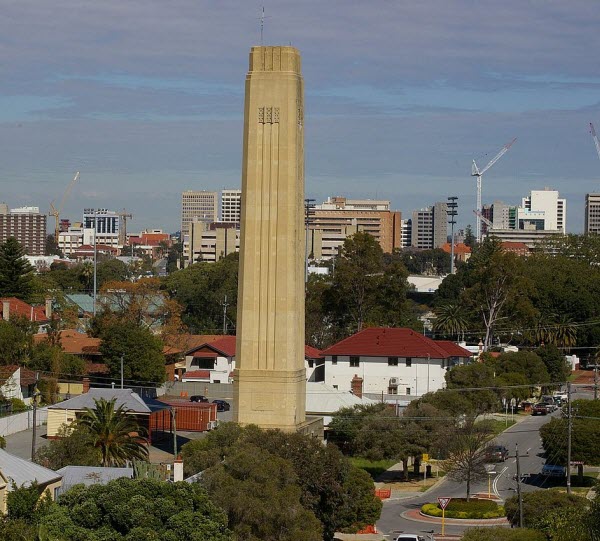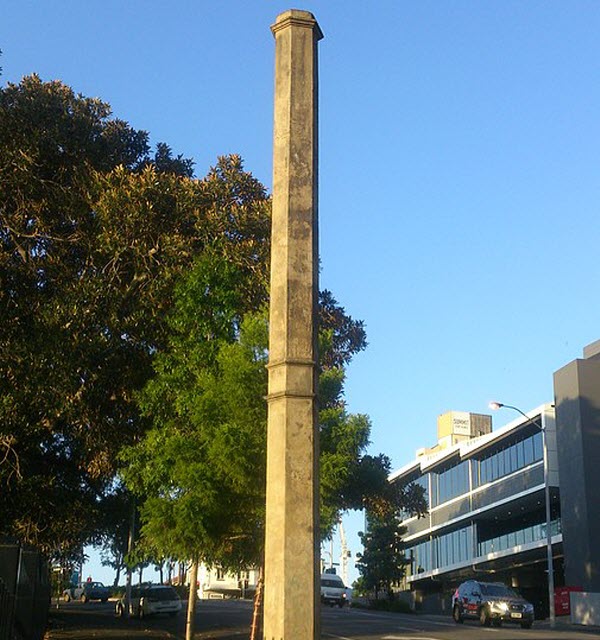
Sewer vent shafts are hidden amongst us. We walk past them daily with barely a glance… and we have tens of thousands across the country.
More surprising is that some of them are among our most distinctive landmarks.
“New South Wales alone has more than 15,000 sewer vent pipes and chimneys,” according to Duncan Reynolds, Research and Development Manager for SVSR, “but we’re very good at hiding them. There are a lot in Sydney and in the NSW Central West. There are several in Goulburn. And they are spread across Adelaide and Melbourne.”
While sewer vent shafts serve a practical purpose, many are now listed on local and state heritage registers as items of historic interest.
Their history – and future – are intriguing.

A brief history of vent shafts
Sewer pipelines often produce toxic and harmful gases including hydrogen sulphide (aka “rotten egg gas”). Under typical conditions, these gases chemically react to form acids which cause corrosion of our valuable and critical pipes. If the problem persists this leads to leaks and even complete collapse of the sewer system, with catastrophic consequences.”
Vent cowls and shafts play a crucial role by providing adequate ventilation in wastewater networks.
Sydney Water maintains around 10,000 vent shafts in the Sydney, Illawarra and Blue Mountains regions. They are often positioned in elevated spots, and today, they are generally between 9 and 18 metres tall.
Australian vent shafts date from the early 1800s – and the earliest models were much larger … “up to 50 to 60 metres tall,” advises Duncan, “and some were handcrafted from sandstone.”
Vent shafts today tend to be fabricated in stainless steel – which provides better durability and requires minimal maintenance. The earliest Australian versions were much more aesthetic, and made from bevelled or carved sandstone or brick.

Notable attractions
Browse through the online state heritage registers and you are likely to come across multiple listings for sewer vents.
Some feature decorative elements such as neo classical brackets, many are octagonal, and several are listed alongside a residence. There’s a prime example in Stanmore in Sydney’s inner west, where the sewer stack forms part of the front fence of a miniature workers cottage.
Notable sewer vent chimneys include the three (of an original five) Monier Ventilation Shafts in Brisbane’s Spring Hill, designed by Joseph Monier and built in 1904. The deco-style Lincoln Street Ventilation Stack looms above homes in Highgate in Perth (sealed and now a communications tower). And in north Bondi, the prominent white tower in Military Road began life as a sewer vent in 1888.
One of the most distinctive (former) sewer vents is a Sydney landmark – the obelisk in Hyde Park. Designed in Victorian Egyptian architectural style, it was completed in 1857 and is the only remaining example constructed entirely of sandstone.

Shifting opinion
While some homeowners enjoy the distinction of having a heritage listed sewer stack in their front yard, there has been a general move away from their widespread use.
“The shift began with changing plumbing codes in the 1970s,” explains Duncan. ‘In many places Councils have sealed or knocked down a number of shafts. There has been a general move toward installing centralised Odour Control Units (OCU’s) in targeted areas where odours and problems are most likely to occur. OCU’s incorporate chemical dosing and/or activated carbon media instead of using natural, passive ventilation through sewer vent pipes.
They are designed to absorb and chemically change odours to reduce their offensiveness to the public.’
Every method for controlling odours and de-pressurising sewer networks has it’s advantages and disadvantages.
‘For example, activated carbon is designed to last about two years before replacement,” says Duncan, “compared to a vent shaft which lasts up to 15 years without any service. There is evidence to suggest that odour filter media also doesn’t expel gases as effectively, which can increase corrosion of the underground concrete pipes.’

Future of vent shafts
While sewer vent shafts are a smart solution, SVSR is looking for even better options. “Research and development is crucial as we look to the future,” says Duncan, “and as we look for next-generation designs.”
To that end, SVSR undertook a rigorous application process to be accepted into the Nandin Innovation Centre, part of the ANSTO deep technology hub in Sydney. And we are working with a team of researchers at the University of New South Wales to further develop our innovative – and potentially ground-breaking – sustainable odour control project.
SVSR is the market leader in the design, construction and installation of sewer ventilation systems. And we will continue to lead, thanks to a commitment to innovation and quality. Contact us if you would like maintenance-free and sustainable vent shaft options.

